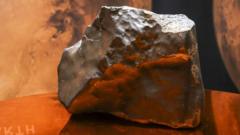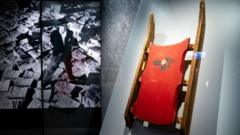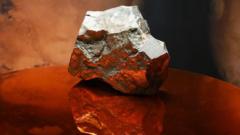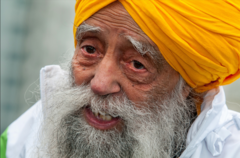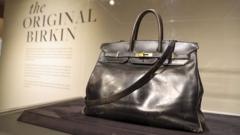The auction at Bonhams is set for the second week of July, showcasing a significant piece of history.
Rare 1931 Oil Portrait of Mahatma Gandhi to Hit the Auction Block in London
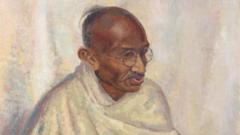
Rare 1931 Oil Portrait of Mahatma Gandhi to Hit the Auction Block in London
This unique artwork, painted by Clare Leighton, highlights Gandhi's legacy during the crucial 1931 Round Table Conference.
A remarkable oil portrait of Mahatma Gandhi, painted during his visit to the UK in 1931, is expected to attract significant attention when it goes under the hammer at Bonhams in London next month. Gandhi, a pivotal figure in India’s quest for independence, is widely celebrated as the "father of the nation," renowned for his philosophy of non-violent resistance against British colonial rule.
The artwork, crafted by British painter Clare Leighton, is reportedly the only oil portrait for which Gandhi sat in person. This was during his attendance at the second Round Table Conference in London, where discussions focused on legislative reforms and India's path to self-governance. According to Leighton’s great-nephew, Caspar Leighton, the painting epitomizes unique historical and cultural significance and merits public viewing, whether in India or globally.
Leighton was one of a select few artists allowed to work closely with Gandhi, sketching him on several occasions. The portrait remained in the family until the artist’s passing in 1989 in the US. Leighton had become acquainted with Gandhi through her partner, a British journalist supportive of the Indian independence movement. Notably, the artist exhibited her works, including this portrait, at the Albany Galleries in London in November 1931, though Gandhi himself did not attend.
The painting garnered positive remarks, as noted by journalist Winifred Holtby, who described Gandhi sitting bare-headed and approachable in his traditional attire. Following its initial exhibition, the portrait appears to have been missing from public display until 1978 when it was featured in a Boston Public Library exhibition comprising Leighton's works. The portrait has an intriguing history, including a reported incident in the 1970s when it was damaged by a knife attack, allegedly instigated by a right-wing Hindu activist.
While Gandhi's legacy continues to inspire countless hearts worldwide, his polarizing stance during India's Partition gives rise to complex views within certain political factions. Tragically, he was assassinated in 1948 by Nathuram Godse, a member of a nationalist organization, highlighting the contentiousness surrounding his life's work. As this significant portrait makes its way to auction, it embodies the enduring emotional and political resonance of Gandhi's contributions to India's struggle for freedom.
The artwork, crafted by British painter Clare Leighton, is reportedly the only oil portrait for which Gandhi sat in person. This was during his attendance at the second Round Table Conference in London, where discussions focused on legislative reforms and India's path to self-governance. According to Leighton’s great-nephew, Caspar Leighton, the painting epitomizes unique historical and cultural significance and merits public viewing, whether in India or globally.
Leighton was one of a select few artists allowed to work closely with Gandhi, sketching him on several occasions. The portrait remained in the family until the artist’s passing in 1989 in the US. Leighton had become acquainted with Gandhi through her partner, a British journalist supportive of the Indian independence movement. Notably, the artist exhibited her works, including this portrait, at the Albany Galleries in London in November 1931, though Gandhi himself did not attend.
The painting garnered positive remarks, as noted by journalist Winifred Holtby, who described Gandhi sitting bare-headed and approachable in his traditional attire. Following its initial exhibition, the portrait appears to have been missing from public display until 1978 when it was featured in a Boston Public Library exhibition comprising Leighton's works. The portrait has an intriguing history, including a reported incident in the 1970s when it was damaged by a knife attack, allegedly instigated by a right-wing Hindu activist.
While Gandhi's legacy continues to inspire countless hearts worldwide, his polarizing stance during India's Partition gives rise to complex views within certain political factions. Tragically, he was assassinated in 1948 by Nathuram Godse, a member of a nationalist organization, highlighting the contentiousness surrounding his life's work. As this significant portrait makes its way to auction, it embodies the enduring emotional and political resonance of Gandhi's contributions to India's struggle for freedom.

